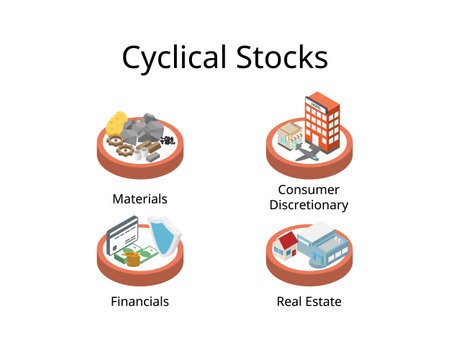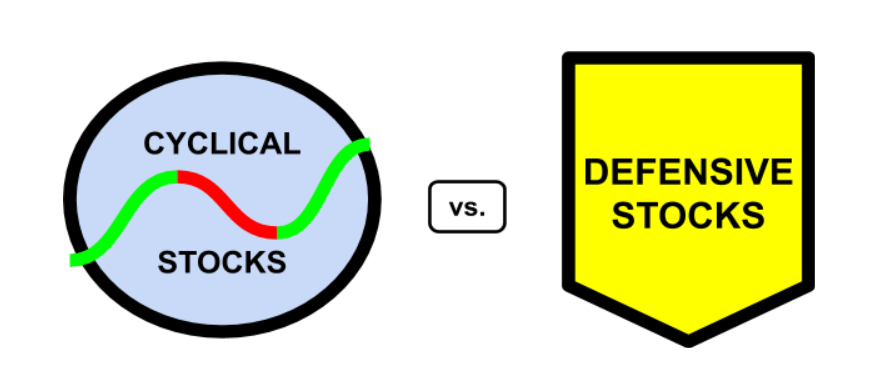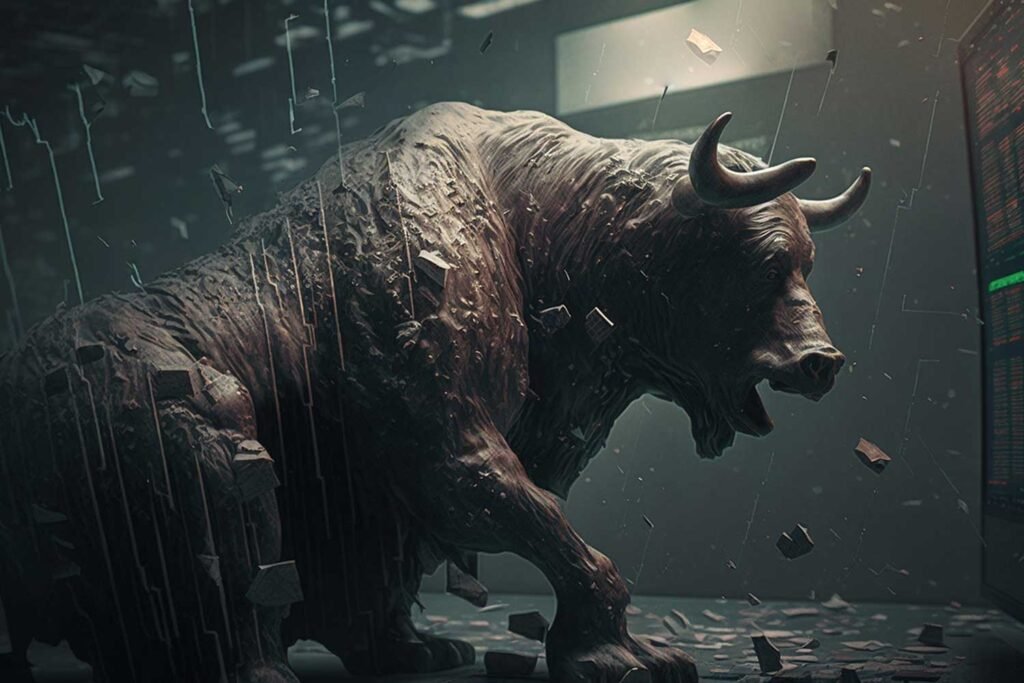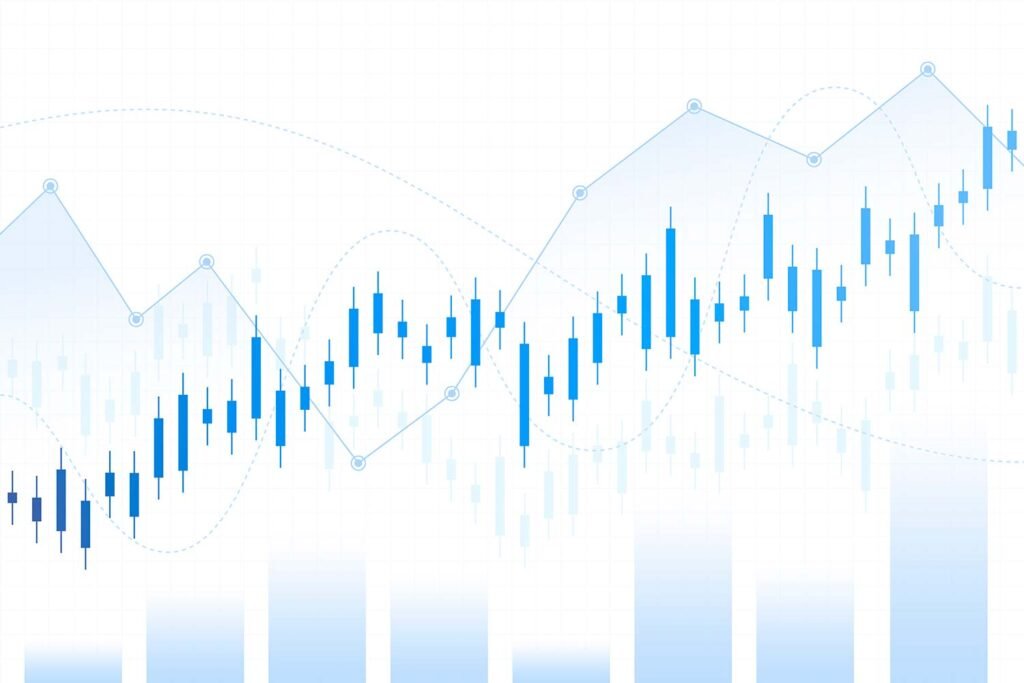Investing in stocks can help grow your money, but it is critical to know the different types of stocks available. Some important ones are cyclical, defensive, growth and value stocks. In this blog post we will look at cyclical and defensive (non-cyclical) stocks.
Cyclical stocks are largely affected by the ups and downs of the economy; while Defensive stocks stay fairly steady no matter how the economy is doing. Recognizing their main differences is critical for investors looking to build an investment portfolio that can survive different market conditions.
What are Cyclical Stocks?

Cyclical stocks belong to companies closely tied to the economy’s cycles. They typically rise when the economy grows and fall during recessions or slowdowns.
To put it clearly, cyclical stocks are affected by major shifts in the whole economy. Their value varies from one point to the next with the overall business cycle.
These cyclical stocks tend to gain worth when the economy expands, as consumer and business spending goes up. But they also get hit harder when economy decline, because their performance depends directly on economic health. This makes cyclical stocks generally more volatile and risky than defensive stocks. Investors should prepare for potentially big price shifts and greater uncertainty.
Example of Cyclical Industries
Cyclical Industries are closely tied to the economy’s movements. Some major examples include:
- Automobiles
- Luxury goods
- Construction
- Travel and hospitality
- Technology
- Consumer discretionary goods
Factors influencing cyclical stocks
Several factors impact how cyclical stocks perform:
- Economic indicators like GDP growth and consumer confidence
- Consumer spending patterns, which tend to rise when the economy grows and fall when it shrinks
- Interest rates, with lower rates usually benefiting cyclical stocks.
- Global economic conditions. When major economies go through recessions, it can affect negatively on cyclical stocks
for an investor looking to invest in stocks, knowing the difference between cyclical and defensive stocks and the factors that determines their performance is of utmost importance
What are Defensive Stocks?

Defensive stocks come from companies that deliver reliable earnings, no matter how the stock market or economy is doing. Defensive stocks tends to be less volatile as compared to cyclical stocks.
Defensive stocks are usually associated with companies that provide essential products and services like consumer staples, healthcare and utilities. Demand for these things stays pretty steady even in bad economies, since people always need them.
A major advantage of defensive stocks is their steady performance and reliable returns for investors, even when markets turn volatile or the economic situation becomes unclear. While they may not get as much growth as cyclical stocks during economic expansion, defensive stocks provide less volatility and risk, which makes them attractive for cautious investors.
Examples of Defensive Industries
Some defensive industries are:
- Utilities: Providers of electricity, water, gas and other must-have services
- Consumer staples: Food, beverages and household goods
- Healthcare: Medical services, pharma, medical devices
Factors influencing defensive stocks
Defensive stocks get influenced by things like:
- Consumer behavior during downturns: People keep buying essentials goods and services regardless of economic situation.
- Regulations: Some defensive industries like utilities operate in a regulated environment that provides stability.
When comparing cyclical and defensive stocks, it is important to understand their different features and how they respond to economic conditions. Defensive stocks provide investors with more steady and predictable investment options, especially during uncertain economic situation.
Comparing Cyclical and Defensive Stocks:
| Feature | Cyclical Stocks | Defensive Stocks |
|---|---|---|
| Economy Dependency | High | Low |
| Volatility | High | Low |
| Examples | Cars, Luxury items | Power, Consumer staples |
| Risk Level | High | Low |
| Performance in Recession | Worse | Better |
| Dividend Reliability | Less reliable | More reliable |
Major Differences of Cyclical vs Defensive Stocks

Cyclical and defensive stocks have distinct features that set them apart. Learning these differences is essential for building a balanced portfolio across economic conditions.
Economy Dependency
- Cyclical stocks largely depend on economic situation, as their performance is directly connected to overall business health. During the time of economy growth, they typically outperform the market. While they can struggle during the economy decline.
- Defensive stocks hold steady no matter how the economy is performing. They provide essentials goods and services that are always in demand.
Volatility and Risk
The economic cycles make cyclical stocks more volatile and risky versus defensive ones.
- Cyclical stock investors can face huge price fluctuations, leading to substantial gains or losses depending on their investment timing.
- Defensive stocks offer lower volatility and risk, making them more stable options for cautious investors.
Performance in Economic Cycles
Cyclical and defensive stocks follow different paths across economic cycles.
- Cyclical stocks gain value when the economy grows and consumers have money to spend freely. But they decline sharply in recessions.
- Defensive stocks deliver steady performance throughout economic cycles, as demand for essentials products and services remains relatively constant.
How These Stocks Impact Investment Strategies
The different characteristics of cyclical and defensive stocks have considerable implications for investing strategies.
- Cyclical stocks might suit exponential growth strategies, because investors aim to capitalize on their high returns during economic growth.
- Meanwhile, cautious investors prioritize defensive stocks for their stability and consistent dividends rather than potential growth.
Comparing Cyclical Stocks and Defensive Stocks Sectors,
The stock sectors also categorize into cyclical stocks and defensive stocks based on how they respond to economic change:
| Cyclical Sectors | Defensive Sectors |
|---|---|
| Cars | Power |
| Infrastructure | Consumer goods |
| Home appliances | Healthcare |
| Airlines | Telecom |
| Tourism | Basics like food |
| Retail | Education |
| Real estate | Waste companies |
Investing Strategies with These Stocks

To build a balanced portfolio, it is important to consider both cyclical and defensive stocks. By strategically balancing these two types of stocks, investors can enhance their profit while handling risk effectively.
- Balance portfolio with a portion of cyclical stocks for potential growth when economy grow and defensives stocks for stability and income generation.
- Timing the market with cyclical stocks: buy them early in an economic recovery and sell before next financial crisis. But accurately timing the markets is very difficult.
- Use defensive stocks for steady dividends and to protect portfolio during economic downturns
- Diversify investment across different sectors and industries, including both cyclical and defensive stocks, to reduce impact of any single stock or sector on your overall portfolio performance.
By using these approaches and understanding the main differences, investors can navigate economic cycles towards their financial goals.
Conclusion
Understanding the difference between cyclical and defensive stocks is very important for successful investment. Cyclical stocks tie closely to economic cycles, offering high returns in expansions but also carrying high risks. On the other hand, Defensive stocks provide stability across economic conditions.
Incorporating both stock types into a diverse portfolio allows investors to go through market shifts. Consulting financial advisors and researching thoroughly is always recommended for optimal portfolio management.


